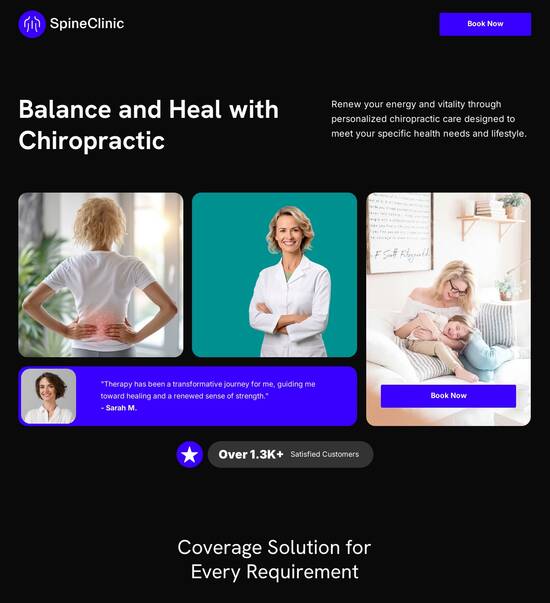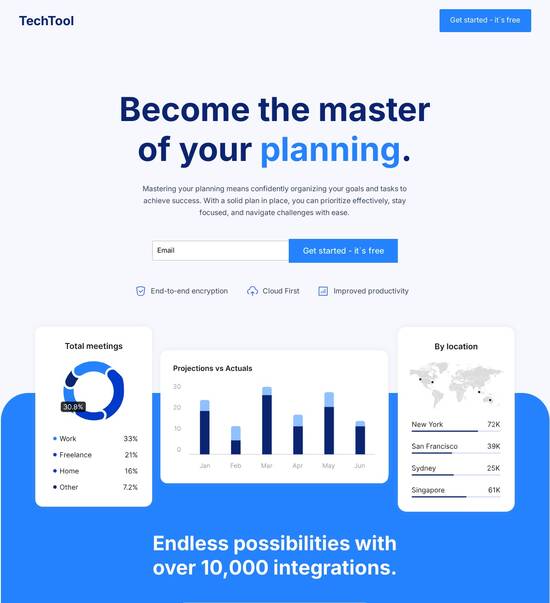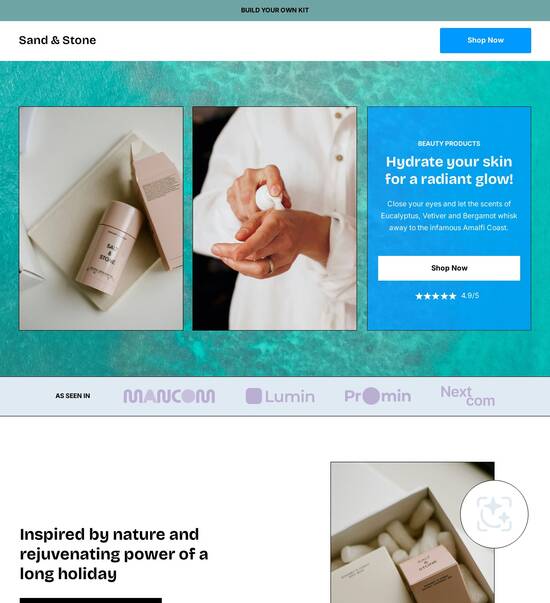
Red 403 forbidden page template
Explore Similar TemplatesAbout template
Discover a stylish red 403 forbidden page template that reflects your unique style!
Recommended templates

Easy to build without coding
With the intuitive drag-and-drop builder, anyone on your team can create high-converting pages without any knowledge of code or design. Make enhancements to your landing page with custom widgets using Javascript, HTML/CSS, or third-party scripts.

Multiple layouts for any industry and goal
Select from 500+ landing page layouts built to boost conversions across industry-specific scenarios. Customize them by adjusting fonts, adding images, and generating on-brand content with the AI assistant. Quickly scale with Instablocks® and Global Blocks that you can save, reuse, and update globally.

Loads fast and looks polished on any device
Every template is responsive, which means they present professionally on any device and load blazingly fast with our Thor Render Engine. You can also power them up with Google AMP technology to deliver an unparalleled mobile experience and drive higher conversions.

Robust analytics & experimentation
Get real-time updates and reporting across all your devices, showing the number of visitors, conversions, cost-per-visitor, and cost-per-lead. Launch AI-powered experiments, run A/B tests, and use heatmaps to analyze user behavior, then optimize your landing page to maximize conversions.







Easy to build without coding
With the intuitive drag-and-drop builder, anyone on your team can create high-converting pages without any knowledge of code or design. Make enhancements to your landing page with custom widgets using Javascript, HTML/CSS, or third-party scripts.
Multiple layouts for any industry and goal
Select from 500+ landing page layouts built to boost conversions across industry-specific scenarios. Customize them by adjusting fonts, adding images, and generating on-brand content with the AI assistant. Quickly scale with Instablocks® and Global Blocks that you can save, reuse, and update globally.
Loads fast and looks polished on any device
Every template is responsive, which means they present professionally on any device and load blazingly fast with our Thor Render Engine.
Robust analytics & experimentation
Get real-time updates and reporting across all your devices, showing the number of visitors, conversions, cost-per-visitor, and cost-per-lead. Launch AI-powered experiments, run A/B tests, and use heatmaps to analyze user behavior, then optimize your landing page to maximize conversions.
All the features you need to build lead-generating landing pages
Explore more featuresLearn how to build top-performing landing pages for any goal
FAQs
Leading the way in building high-performing landing pages





Creating an effective Red 403 forbidden page template with Instapage
A Red 403 forbidden page template serves as a critical element in managing user expectations when they encounter access restrictions on your site. Instapage empowers marketers to create these templates easily, ensuring your digital campaigns maintain engagement even during access issues.
Understanding the importance of a Red 403 forbidden page
A Red 403 forbidden page informs users they do not have permission to access certain content. This is crucial for maintaining user trust and directing them to alternative resources or contact information. Crafting a clear and informative Red 403 page ensures users leave with a positive impression, despite the restriction.
- Improves user experience: A well-designed page reduces frustration by clearly explaining the restriction.
- Directs users elsewhere: Offers users alternative actions, like contacting support or redirecting to another relevant page.
- Maintains brand tone: Customizing your template with brand-specific visuals ensures brand consistency even when access is limited.
Step 1: Accessing Instapage Templates
Start by logging into your Instapage account and navigating to the template section. Here, you will find a variety of customizable templates tailored for various purposes, including the Red 403 forbidden page.
- Explore the template library: Find pre-designed templates suitable for Red 403 pages.
- Customize your selection: Use Instablocks to add unique brand elements such as logos and color schemes.
- Preview responsiveness: Ensure that your template looks great on all devices by utilizing the preview feature.
Step 2: Enhancing the User Experience
Customize your Red 403 forbidden page template to align with your brand while providing users clear guidance.
- Add personalized messaging: Incorporate a friendly message explaining the access limitation.
- Include links to important resources: Offer pathways to FAQs, support, or homepage links to engage users.
- Consider SEO: Use optimization techniques to ensure your 403 page is indexed correctly and provides value.
Step 3: Analyzing Engagement Metrics
After launching your new Red 403 forbidden page, monitor its performance through Instapage's analytic tools.
- Track user behavior: Use heatmaps to see how users interact with the page.
- Monitor bounce rates: Analyze if users are leaving or engaging further with your website.
- Refine over time: Adjust messaging based on analytics to improve user experience continually.
By following these steps, you can create an effective Red 403 forbidden page that retains users within your brand ecosystem.
Ready to transform your digital marketing approach? Start creating your Red 403 forbidden page template with Instapage today!
People also ask about Red 403 forbidden page template
Unveiling the Red 403 Forbidden Page Template: A Deep Dive into Error Handling and User Experience
Understanding the impact of the 403 forbidden error
A 403 Forbidden error occurs when a user tries to access a resource on a website but is denied permission. This error might signify that the server is refusing to allow access due to a variety of reasons, such as insufficient permissions, access restrictions, or security protocols. For website owners, this error can be a source of frustration, as it can lead to negative user experience, affecting site navigation and visitor retention.
For visitors, encountering a 403 error can be confusing and disappointing. It highlights a barrier to accessing content they may need or want. This can create a sense of disconnect between the user and the website, potentially resulting in lost opportunities for conversions or engagement. Understanding how to effectively design a red 403 Forbidden page template can mitigate these challenges and improve overall user experience.
Designing the red 403 forbidden page template
Designing an effective red 403 Forbidden page template goes beyond mere aesthetics; it's about how well you communicate the error to your audience. Visual elements play a crucial role in user experience, impacting how users interpret an error page. The color red, often associated with urgency and alertness, can effectively convey warning; however, it should be used thoughtfully to avoid invoking panic.
Choosing the right typography also matters greatly. Clear and easily readable fonts enhance comprehension for visitors, while an organized layout can guide users naturally toward alternative actions. Additionally, ensuring that the template is responsive is essential, as users access websites through various devices. Mobile versus desktop designs must accommodate the different screen sizes while maintaining functionality.
Visual Hierarchy
Organize content from most important to least important for clarity.
Clear Call to Action
Include buttons or texts that direct users to alternative pages.
Intriguing Imagery
Use images or icons that help explain the 403 error, enhancing understanding.
Accessibility options: ensuring inclusivity
Accessibility is a key aspect of effective web design, ensuring all users can engage with your content. When designing the red 403 Forbidden page, it’s vital to adhere to color contrast guidelines, which recommend a minimum contrast ratio of 4.5:1 for body text. This helps individuals with visual impairments to read the text clearly, ensuring an inclusive experience.
Additionally, integrating ARIA roles and labels significantly improves navigation for users who rely on screen readers. This ensures screen reader technology can effectively communicate the nature of the error. Enhanced keyboard navigation, such as adequate tab indexing, further aids in user navigation and creates a more satisfying experience for everyone.
Tailoring the 403 page experience: place and occasion
Every 403 Forbidden error page is an opportunity for branding. Customizing the design of your red 403 Forbidden page can incorporate brand color schemes, logos, and even a light-hearted message that aligns with your overall branding strategy. By doing this, you can soften the impact of the error and establish a memorable touchpoint with visitors.
Additionally, situational messaging can be quite effective. Crafting messages that resonate with ongoing events, like holiday greetings or promotional campaigns, can connect with users and make them feel more engaged. This approach can help maintain user interest even in the face of an error.
Creating an engaging user experience
The red 403 Forbidden page can serve a dual purpose—conveying important information while also creating an inviting experience. For instance, restaurants may choose to use culinary-themed design elements that guide users towards menu options or other relevant pages. Displaying a menu of options ensures that rather than hitting a dead end, users can remain engaged with the site.
Additionally, giving personalized messages based on previous user behavior can enhance the experience. For instance, showing a brief message or a discount code to users who frequently visit the website can keep them from getting discouraged by the error. Surprise gifts or incentives like temporary promotions can act as an effective retention strategy, helping to alleviate the frustration caused by the error.
Enhancing interaction through additional features
To create a more positive experience, integrating features that enhance user interaction on the red 403 Forbidden page can lighten the mood. Incorporating background music options, for example, can transform a frustrating moment into something more enjoyable, reminding visitors of a lively atmosphere, such as a music night at a local venue.
Moreover, linking to social media channels allows users to share their experience, which can significantly enhance brand visibility. Encouraging visitors to engage online creates a sense of community, helping users feel connected, even when they encounter a roadblock.
The power of words: crafting the right message
Language is a critical tool in conveying your message effectively. Adopt an empathetic tone to ensure users feel valued, even when facing a 403 error. Witty and engaging messaging can transform the error into a humorous moment. Phrases like, 'Seems you've hit a brick wall! But don’t worry, we have plenty of paths to explore!' can lighten the mood.
One effective strategy involves providing alternative recovery options. This can be executed through straightforward redirect links to popular categories, blog posts, or product pages. Additionally, implementing a search bar allows users to quickly find what they are looking for, minimizing the frustration often associated with encountering an error page.
Visual indications: the role of color and design in ux
Color plays a vital role in design, especially in error pages. The psychological implications of red as a warning sign should prompt careful consideration of contrasting colors that accompany it. While red effectively indicates a problem, using alternatives like orange can subtly convey caution without feeling overly alarming. Understanding these color mixes can enhance the user experience and reduce frustration.
Visual elements, such as appropriate imagery and icons, enhance the message conveyed through text. Selecting visuals that resonate contextually with the content can improve user comprehension, ensuring they grasp the message quickly. Combining strong visuals with clear written content can create a cohesive and inviting experience.
Tactile user engagement: fostering a connection
Creating tactile engagement harnesses the power of interactivity. Incorporating elements like buttons or forms prompts users to take action, which helps cultivate an ongoing connection rather than a temporary interruption. The design should always encourage users to explore, even if they find themselves encountering errors.
In addition to fostering engagement, the 403 Forbidden page should communicate a message of community. Utilizing words that evoke a sense of belonging encourages users to return. For example, messages that invite users to stay connected can help create lasting relationships with your brand, ensuring more visits in the future.
Case studies: success stories of red 403 forbidden page implementations
Successful brands have made significant strides in transforming their 403 error pages into engaging experiences. For instance, XYZ Corp integrated a playful animation with a friendly message that lightened the mood for users. Their emphasis was not just on informing users about the error but also on encouraging exploration of their other offerings.
Metrics of success from this implementation showed a reduction in bounce rates by 30%, while user engagement significantly improved. Analyzing user feedback can provide insightful metrics that can help refine error page strategies, allowing brands to better connect with their audience when faced with an error.
Innovation and future trends in error templates
As technology evolves, so do the strategies for engaging users on error pages. Emerging technologies such as artificial intelligence can help personalize user experiences by adapting the content based on user preferences and behaviors. Intelligent systems can suggest relevant content or provide customized solutions to common issues.
The influence of social media cannot be underestimated, as user-generated content continues to shape best practices for design. Easy integration of social sharing buttons on error pages allows brands to capitalize on user experiences, creating yet another opportunity to engage visitors, even when they encounter roadblocks. Ensuring adaptability in these areas will allow sites to better serve their audiences in the future.
Ready to skyrocket conversions?
Supercharge your ad campaigns with high-performing landing pages
Get started














